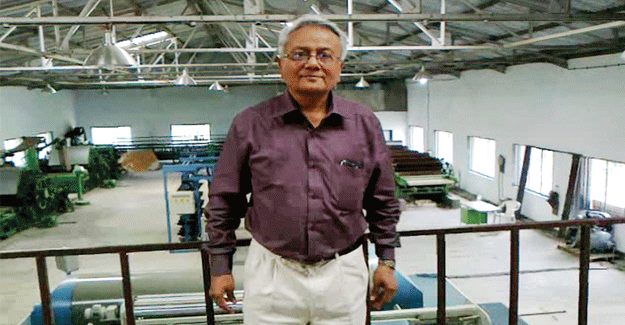Regulation and its strict implementation is the catalyst that will push growth of protective wear in India
Regulation and its strict implementation is the catalyst that will push growth of protective wear in India

Klopman International is among the top global players in workwear and protective fabrics, catering to the need for functional fabrics of various industries - hospitality, healthcare, mining, metals, oil and gas, and more. The company, active in India, for the last three years, and flummoxed by the challenges in the market, has worked out strategies that can go a long way, if complemented by laws and regulations in the workwear and protective wear segment. In an interview with Reena Mital, Mukesh Vijaywargi, Area Director, Klopman International, speaks about the state of the Indian market for performance textiles and the way forward.
Tell us about the current market conditions for Klopman International globally?
The market for workwear and protective wear is growing at a rate of 20% per annum. Europe is the most mature market in the world. The attention to safety at workplace is amazing; the standards which are already very strict are continuously being upgraded. However, the European market is growing at 2-3%, as such Asia & Middle East are becoming the key focus for the company today.
As these regions progress, & industries mature, the protech market will grow. Klopman, with years of experience in basic & advanced fabrics, in the world's most mature market, has to offer its immense expertise & solutions for the most advanced needs in work wear & protective wear. The only area we are not present in is fabric for aluminium or white metal protection.
How has the Indian market been for the company?
The Indian market has been slow to take off, despite the huge potential that exists. In this segment, India is 20 years behind Europe. In India, we are currently marketing only protective wear; & protective wear with its emphasis on safety has more opportunity for Klopman. In this scenario, Klopman has begun educating potential customers about the need & availability of various protech fabrics. The huge amount of money spent on uniforms can be better spent with intelligent choices, & customers can get more from their uniforms. And who better to explain this than Klopman with its more than 40 years of experience in Europe.
Are you happy with the progress made by Klopman?
We have been active in India for the last three years. We are very aware of the ground realities of this challenging market, and realize that a lot of effort needs to go in before we can see desirable results.
Does Klopman plan to start production in Asia?
While Klopman will continue to produce in Europe, we would be adding other production bases shortly, including one JV we have started in Indonesia to manufacture workwear fabrics meeting Klopman norms for the Asian market.
What, according to you, is needed to push demand for protective wear?
Regulation & its strict implementation-this is the catalyst that is needed to stimulate demand for safety wear & high performance wear. This is how the markets grew in the West, & are growing in various Asian countries like Singapore, Hong Kong, Malaysia, etc. In India, safety gear standards for fire fighters differ from district to district, this defies logic. It would be good to have a national standard for firemen which can be followed by all the fire brigades. China has progressed much ahead of India in the use of protective gear. The kind of fabrics demanded by the govt. & industries there for road safety, in mining, iron & steel, oil & gas industries is quite astonishing.
What are the company's projections for the Indian market, over the next five years?
It is very difficult to make any projections about the Indian market in the current situation. We first need to get regulation, standards & a monitoring agency in place so that the usage of protective wear grows. As part of the awareness we would have to show the industry the benefit of using protective wear even though it is much more costly than the basic fabrics they use today. Here, I have to mention that efforts taken by the Indian Technical Textiles Association are commendable. The association is working closely with the industry & the government to introduce regulations and standards.



 textileexcellence
textileexcellence 







